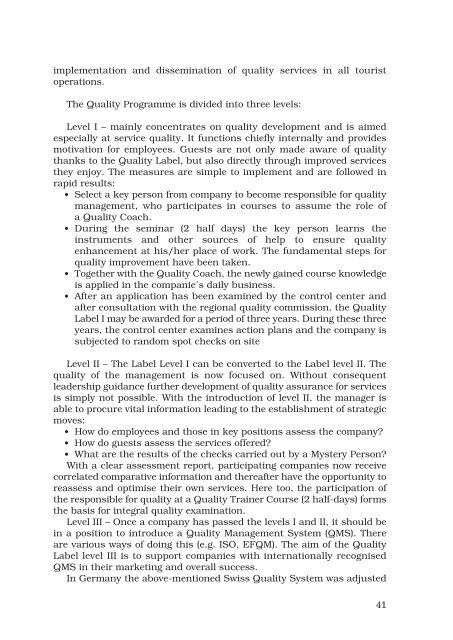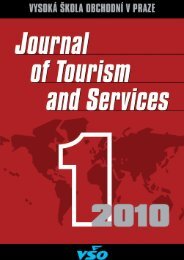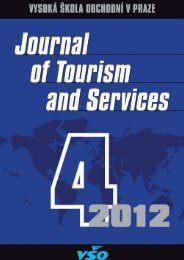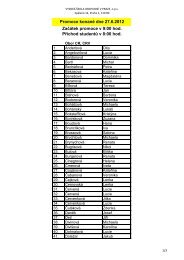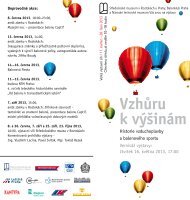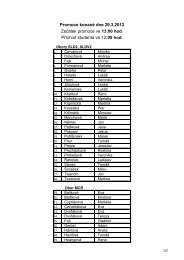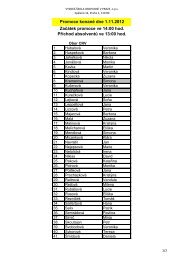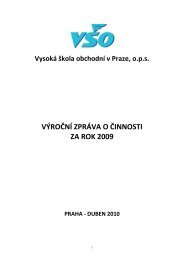Sestava 1 - Vysoká škola obchodnà v Praze
Sestava 1 - Vysoká škola obchodnà v Praze
Sestava 1 - Vysoká škola obchodnà v Praze
You also want an ePaper? Increase the reach of your titles
YUMPU automatically turns print PDFs into web optimized ePapers that Google loves.
implementation and dissemination of quality services in all tourist<br />
operations.<br />
The Quality Programme is divided into three levels:<br />
Level I – mainly concentrates on quality development and is aimed<br />
especially at service quality. It functions chiefly internally and provides<br />
motivation for employees. Guests are not only made aware of quality<br />
thanks to the Quality Label, but also directly through improved services<br />
they enjoy. The measures are simple to implement and are followed in<br />
rapid results:<br />
• Select a key person from company to become responsible for quality<br />
management, who participates in courses to assume the role of<br />
a Quality Coach.<br />
• During the seminar (2 half days) the key person learns the<br />
instruments and other sources of help to ensure quality<br />
enhancement at his/her place of work. The fundamental steps for<br />
quality improvement have been taken.<br />
• Together with the Quality Coach, the newly gained course knowledge<br />
is applied in the companie´s daily business.<br />
• After an application has been examined by the control center and<br />
after consultation with the regional quality commission, the Quality<br />
Label I may be awarded for a period of three years. During these three<br />
years, the control center examines action plans and the company is<br />
subjected to random spot checks on site<br />
Level II – The Label Level I can be converted to the Label level II. The<br />
quality of the management is now focused on. Without consequent<br />
leadership guidance further development of quality assurance for services<br />
is simply not possible. With the introduction of level II, the manager is<br />
able to procure vital information leading to the establishment of strategic<br />
moves:<br />
• How do employees and those in key positions assess the company<br />
• How do guests assess the services offered<br />
• What are the results of the checks carried out by a Mystery Person<br />
With a clear assessment report, participating companies now receive<br />
correlated comparative information and thereafter have the opportunity to<br />
reassess and optimise their own services. Here too, the participation of<br />
the responsible for quality at a Quality Trainer Course (2 half-days) forms<br />
the basis for integral quality examination.<br />
Level III – Once a company has passed the levels I and II, it should be<br />
in a position to introduce a Quality Management System (QMS). There<br />
are various ways of doing this (e.g. ISO, EFQM). The aim of the Quality<br />
Label level III is to support companies with internationally recognised<br />
QMS in their marketing and overall success.<br />
In Germany the above-mentioned Swiss Quality System was adjusted<br />
41


